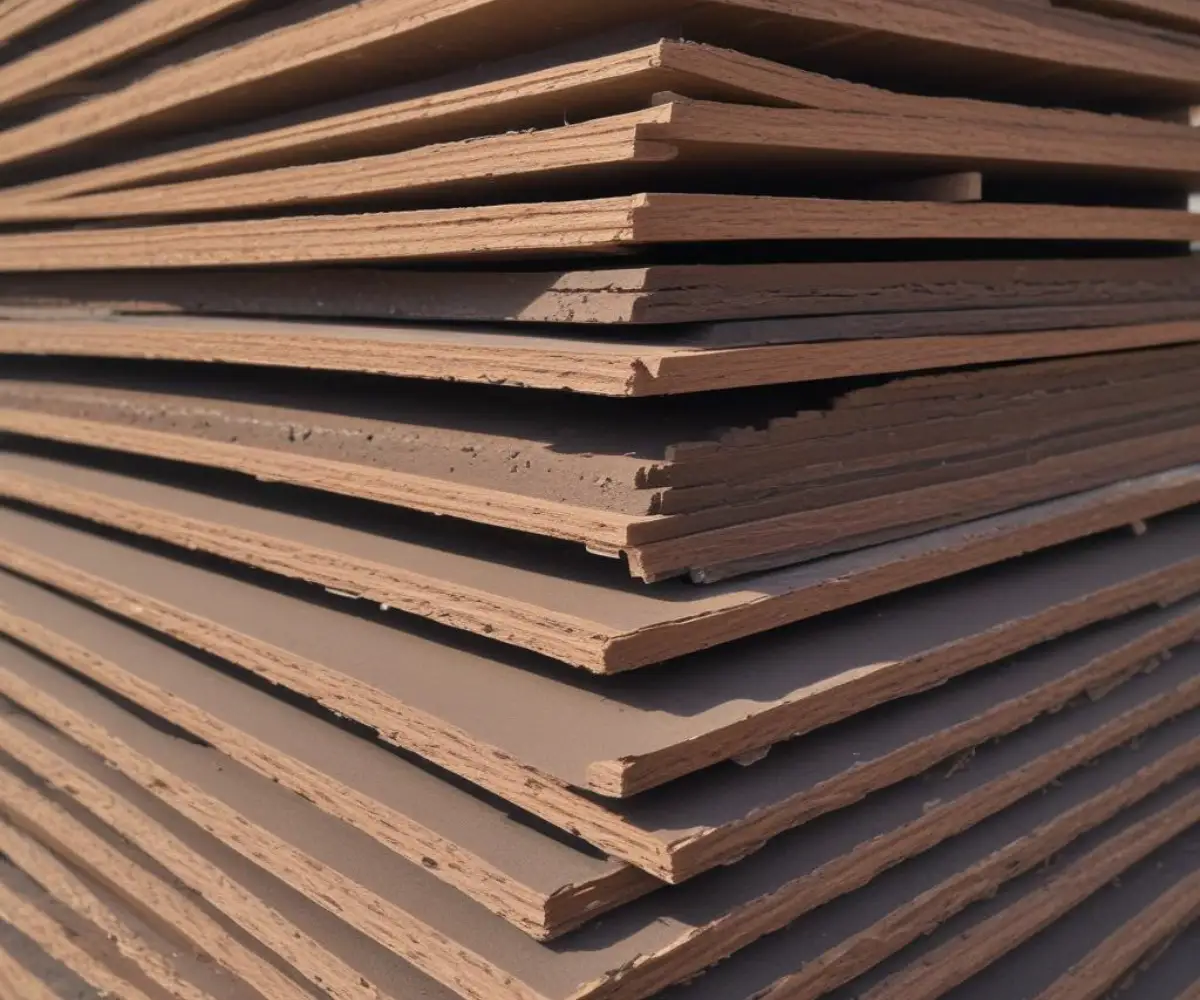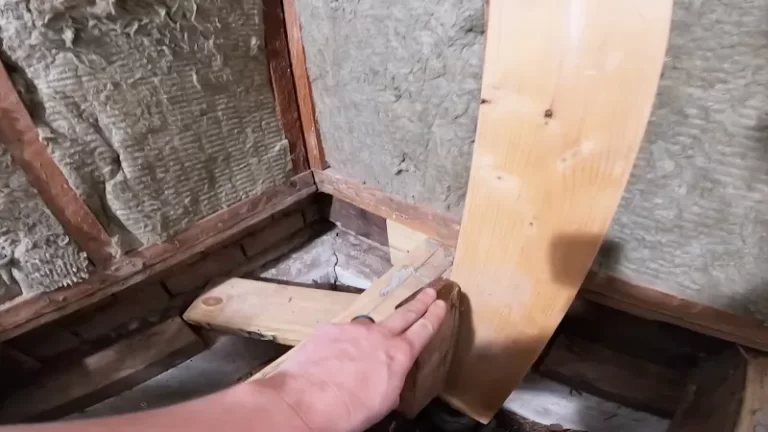Asphalt Impregnated Plywood: The Hidden Danger Lurking in Your Walls?
You’ve discovered a dark, waxy, and heavy wood material during your home renovation. It has a distinct tar-like smell, and you’re wondering what it is, if it’s safe, and what you should do about it. This is a common scenario for homeowners, especially those with properties built in the mid-20th century, who stumble upon asphalt impregnated plywood.
The core problem is the uncertainty surrounding this old-school building material. Homeowners and builders face a dilemma: Is this robust-looking, water-resistant plywood a hidden asset providing superior protection, or is it a toxic relic that could be compromising indoor air quality and trapping moisture, leading to mold and rot? The fear of the unknown—of potential health risks and structural damage—is a significant pain point.
This article will demystify asphalt impregnated plywood. We will delve into what it is, its historical applications, and the pressing problems it can cause in a modern home. More importantly, we will provide a clear, actionable guide on how to identify it, assess the risks, and choose the best modern alternatives to ensure your home is safe, healthy, and structurally sound for decades to come.
You'll Learn About
What Exactly Is Asphalt Impregnated Plywood?
Asphalt impregnated plywood is a type of engineered wood that has been saturated with a bituminous asphalt emulsion under heat and pressure. Plywood itself is made from thin layers of wood veneer glued together, known for its structural strength. The impregnation process was designed to infuse this strong base material with the well-known waterproofing qualities of asphalt.
The primary goal was to create a building panel that could stand up to the elements. During its heyday, it was marketed as a superior sheathing and underlayment material, offering an all-in-one solution for structural support and moisture resistance. You would commonly find it used in exterior walls, as roof sheathing, and for subfloors, particularly in areas prone to dampness.
It’s important to distinguish this product from its more common cousin. While often confused with asphalt impregnated board, which is a fiberboard product, the plywood variant has a laminated wood veneer core, giving it different structural properties. Both were born from the same idea, but their performance and applications could differ.
The Problem: Why This “Solution” Became Obsolete
What was once considered an innovative solution is now viewed by most building scientists as a problematic material. The very properties that made it seem effective are now understood to be its greatest weaknesses. The issues with asphalt impregnated plywood are multifaceted, touching on health, building longevity, and environmental concerns.
Moisture Entrapment: A Perfect Storm for Mold and Rot
The biggest issue is its lack of breathability. Modern building science emphasizes the importance of a “breathable” wall assembly. Walls need to dry out when they get wet, whether from an external leak or from interior condensation. Asphalt impregnated plywood acts as a vapor barrier on the exterior side of the wall, which is the wrong place for it in most climates.
When moisture gets into the wall cavity—and it inevitably will—it gets trapped by the impermeable sheathing. This creates a perfect environment for mold growth and wood rot, which can compromise your home’s structural integrity and your family’s health. The very thing designed to protect against water damage can end up causing it in a catastrophic way.
Health and Air Quality Concerns
The asphalt used in these panels contains volatile organic compounds (VOCs). These chemicals can off-gas into the home, especially when the sheathing is heated by the sun. The distinct asphalt or tarry odor associated with this material is a sign of this off-gassing.
Prolonged exposure to these fumes can lead to respiratory irritation, headaches, and other health issues. For individuals with asthma or chemical sensitivities, the presence of this material can be particularly problematic. The potential for toxic fumes to be released during a fire is another significant safety concern.

Performance and Durability Issues Over Time
Over decades, the asphalt in the plywood can become brittle. This can lead to cracking and a reduction in its water-resistant properties, defeating its original purpose. Furthermore, working with the material during renovations is difficult; it’s heavy, messy to cut, and the dust can be an irritant.
The Modern Solution: High-Performance Alternatives
The construction industry has made massive strides in developing building materials that manage moisture effectively rather than just blocking it. Today’s solutions focus on integrated systems that provide a structural backbone, a weather-resistive barrier (WRB), and vapor permeability. If you discover you have asphalt impregnated plywood, replacing it with a modern system is the best course of action.
These advanced systems are designed to work with the physics of a building, not against it. In the same way that specialized materials like shower glass coatings are now used to manage water in specific areas like bathrooms, modern sheathing systems manage moisture for the entire building envelope. Let’s compare the old with the new.
Comparing Sheathing: Old vs. New
To understand the leap in performance, a direct comparison is necessary. The table below breaks down the key differences between asphalt impregnated plywood and two common modern sheathing systems: OSB (Oriented Strand Board) with a house wrap, and integrated sheathing like the ZIP System®.
| Feature | Asphalt Impregnated Plywood | OSB + House Wrap | Integrated Sheathing (e.g., ZIP System®) |
|---|---|---|---|
| Water Resistance | Good initially, but can degrade. Acts as a vapor barrier. | Good. The house wrap acts as the primary water barrier. | Excellent. The integrated water-resistive barrier is bonded directly to the panel. |
| Vapor Permeability (Breathability) | Very Low. Traps moisture within the wall cavity. | Good to Excellent. House wraps are designed to be permeable. | Good. Engineered to allow the wall to dry out. |
| Installation Process | One-step installation, but panels are heavy and messy. | Two-step process: install OSB, then apply house wrap. | One-step installation. Panels are taped at the seams. Faster and less labor-intensive. |
| Air Sealing | Poor. Seams are not typically sealed, leading to air leakage. | Fair. Depends heavily on the quality of house wrap installation and taping. | Excellent. Taped seams create a continuous, rigid air barrier for high energy efficiency. |
| Health & Environmental Impact | High VOCs, petroleum-based, difficult to recycle. | Lower VOCs. House wraps are plastic-based. | Low VOCs. Often manufactured with sustainable practices. |
| Structural Performance | Good, as it’s based on plywood. | Excellent. OSB is a structurally rated panel. | Excellent. Integrated panels provide both shear strength and weather protection. |
Actionable Guide: What to Do If You Find It in Your Home
Discovering asphalt impregnated plywood doesn’t have to be a cause for panic. By following a methodical approach, you can assess the situation and take the right steps to protect your home and your health.
Step 1: Positive Identification
First, confirm what you’re looking at. Asphalt impregnated plywood is typically a dark brown or black color throughout the panel, not just on the surface. It will feel dense and somewhat waxy to the touch and will have a noticeable asphalt or tar-like smell, which may be stronger on warm days.
Step 2: Assess the Condition
Carefully inspect the sheathing and the surrounding wall cavity. Look for any signs of water damage, such as staining, soft spots on the wood studs, or visible mold and mildew. If the wall cavity is dry and there’s no evidence of moisture problems, the sheathing may not be causing an active issue. However, the potential for future problems and the air quality concerns remain.
Step 3: Plan for Removal and Replacement
For most home renovations, especially those involving siding replacement or gutting a room, the best practice is to remove the asphalt impregnated sheathing entirely. This is the only way to eliminate the health concerns and install a modern, breathable wall system.
Safety during removal is paramount. Wear gloves, safety glasses, and a NIOSH-approved respirator to protect yourself from dust and fibers. The dust from cutting this material can be particularly irritating. Ensure the work area is well-ventilated.
Step 4: Cleanup and Disposal
A thorough cleanup after removal is critical. You’ll want to remove all dust and debris from the work area. A shop vacuum is an excellent tool for this job. It is important to know your tools; for instance, understanding how to turn off the blower function on a shop vac is crucial to avoid accidentally blowing hazardous dust back into the air.
Check with your local waste management authority for proper disposal procedures. Due to its asphalt content, it may be classified as construction and demolition waste and may not be suitable for regular trash or recycling.
Step 5: Install a Modern Sheathing System
With the old sheathing gone, you have a clean slate to build a high-performance wall. Choose one of the modern alternatives discussed above, such as integrated sheathing or a quality OSB/plywood combined with a high-performance house wrap. Pay close attention to properly sealing all seams and openings to create a continuous air and water barrier. This is your opportunity to significantly improve your home’s energy efficiency, durability, and indoor air quality.
Conclusion: Building for a Healthier, More Durable Future
Asphalt impregnated plywood was a product of its time, an early attempt at creating a durable, water-resistant building panel. However, our understanding of building science has evolved dramatically. We now know that a building’s ability to dry out is just as important as its ability to shed water. This old material fails this crucial test, posing risks to both the structure and its inhabitants.
By identifying and replacing this outdated product with a modern, breathable sheathing system, you are not just renovating your home—you are investing in its long-term health and resilience. It’s a proactive step that eliminates potential moisture traps, improves indoor air quality, and enhances energy efficiency. Embracing modern materials science is the key to ensuring your home remains a safe, comfortable, and durable sanctuary for years to come.

